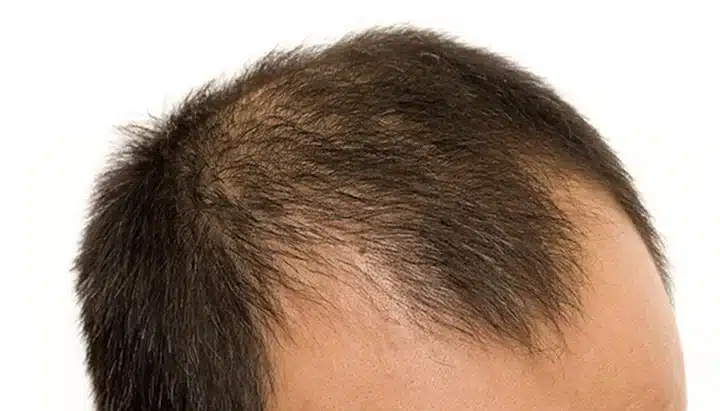Male-pattern baldness, medically known as androgenetic alopecia, impacts countless men globally. This condition is defined by a receding hairline along with thinning at the crown, eventually potentially leading to total baldness for some individuals. Grasping the nature of male-pattern baldness is essential for men experiencing hair loss who seek preventive measures.
Causes of Male Pattern Baldness
The primary culprits behind male-pattern baldness are genetics and hormonal fluctuations. Testosterone, a hormone that is present in greater amounts in men than in women, converts into dihydrotestosterone (DHT), which can shrink hair follicles and trigger hair loss.
Other medical conditions that can induce hair loss include thyroid disease, autoimmune disorders, and fungal infections.
Symptoms of Male-Pattern Baldness
Indicators of male-pattern baldness include:
- Receding hairline
- Thinning at the crown
- Progressing to complete baldness in some instances
Note: Hair loss may also occur on the temples and at the back of the head in certain cases.
Diagnosis and Treatment
Diagnosing male-pattern baldness can involve a physical examination, a review of medical history, and blood tests. In some cases, a scalp biopsy might be needed by your healthcare provider to rule out other causes of hair loss. Obtaining a proper diagnosis from a medical professional or dermatologist is crucial for determining the most effective treatment plan.
Treatment options include over-the-counter and prescription medications, hair transplant surgery, low-level laser therapy, and platelet-rich plasma therapy.
Two widely used medications for treating male-pattern baldness are minoxidil and finasteride. Minoxidil is a topical solution applied directly to the scalp, while finasteride is an oral medication that prevents the conversion of testosterone to DHT.
Hair transplant surgery involves relocating hair follicles from a healthy area of the scalp to a bald or thinning area. Conversely, low-level laser therapy uses low-intensity laser light to boost hair growth and enhance scalp health. Platelet-rich plasma therapy is another treatment that utilizes the patient’s own blood plasma to foster hair growth and improve scalp health.
Lifestyle Changes for Male-Pattern Baldness
In conjunction with medical treatments, making lifestyle changes can help manage male-pattern baldness. A nutritious diet rich in vitamins and minerals can support hair health and prevent loss.
Moreover, managing stress through activities like yoga, meditation, or exercise can help prevent hair loss and improve overall well-being. Avoiding harsh hairstyles, such as tight braids, ponytails, hair ironing, and frequent blow-drying, can also contribute to healthy hair growth.
Conclusion
Male-pattern baldness is a prevalent condition that affects millions of men worldwide. Understanding its causes, symptoms, and treatment options is essential for those experiencing hair loss who wish to take preventive action. By getting appropriate treatment and making beneficial lifestyle changes, individuals can restore their confidence with fuller hair. If you are experiencing hair loss, it is advisable to consult with a doctor or dermatologist.
